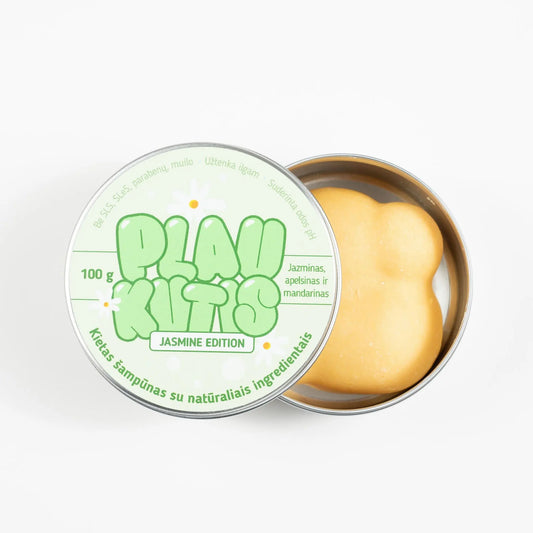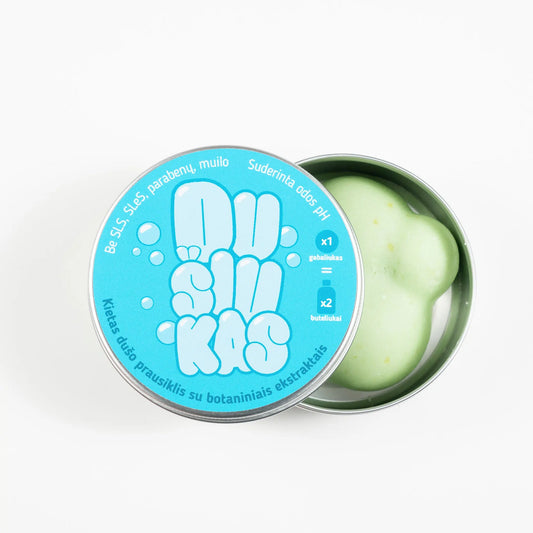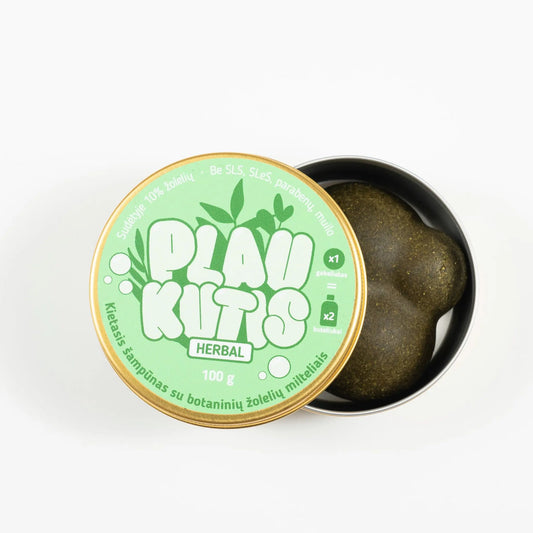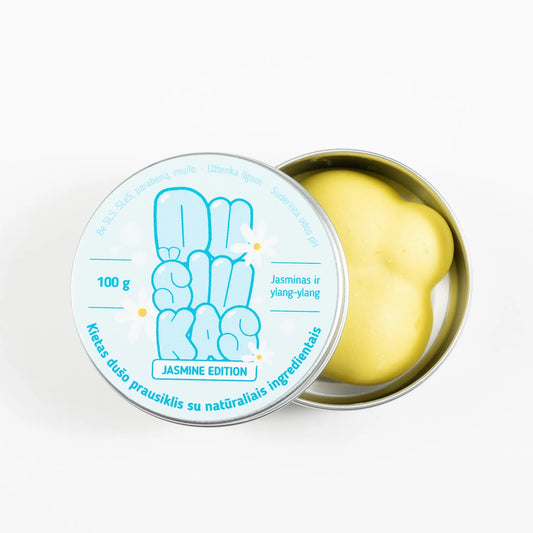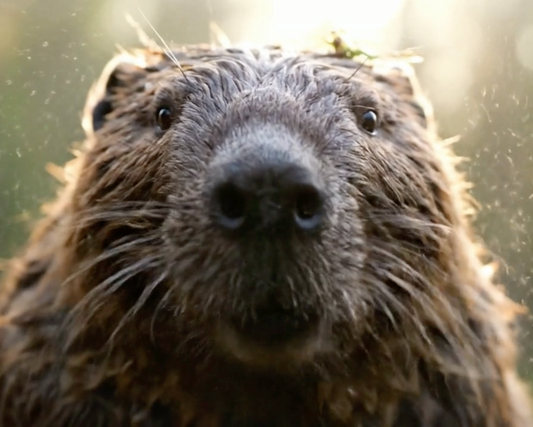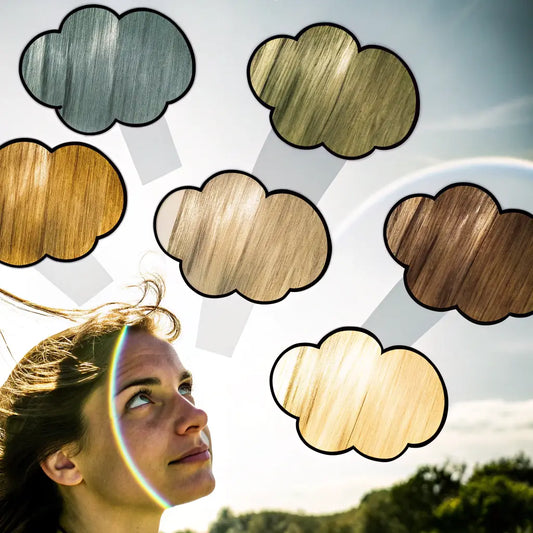Have you ever noticed that your hair isn't what it used to be? Maybe your straight hair has started to look wavy, or your curls have become less defined. These changes are a natural process called hair texture changes. Hair type can change for a variety of reasons, including hormonal changes, age, health, and environmental factors.
Research shows that hair texture changes are much more common than many people think. A 2019 study published in The Journal of Dermatology found that up to 45% of women aged 18-54 experience significant changes in their hair texture at least once in their lives. Understanding why your hair changes and how to manage these changes can make the process easier and help you maintain healthy hair. In this article, we’ll explore why hair changes occur, what factors influence these changes, and how to effectively care for your changing hair.
Why does hair type change over time?
Hormonal changes and hair type
Hormones have a big impact on our hair. Life stages like puberty, pregnancy, menopause, or taking hormonal birth control can cause significant changes in hair texture and growth. Hormonal fluctuations affect hair follicles, which can lead to changes in hair type. For example, research published in The Journal of Clinical Endocrinology shows that increased estrogen levels during pregnancy increase the resting phase of hair, which can make hair appear thicker, and post-pregnancy hair loss can completely change the texture.
- Example : A woman who had straight hair may notice that her hair starts to curl after giving birth due to hormonal changes. Similarly, a woman with curly hair may notice that her curls become less pronounced during menopause due to decreased estrogen levels.
Fun fact : 20% of women say they develop new waves or curls during pregnancy, according to a 2018 study by Maternity Health Research .
The impact of aging on hair type
Aging affects not only hair color, but also the structure of the hair itself. As we age, hair follicles shrink, causing hair to become thinner. Sebum (the hair's natural oil) production also decreases, making hair drier and coarser. Studies show that by the age of 50 , hair density can decrease by up to 35% , which affects curls and overall hair health.
Curly hair can lose its elasticity as it ages, making curls less strong. Straight hair can find that their hair becomes more brittle, requiring extra care to prevent breakage.
- Fun fact : A 2021 study published in The Aging Hair Project found that 68% of women over the age of 50 experienced significant changes in their hair texture and density.
Health influences on hair changes
Your health directly affects the condition and texture of your hair. For example, thyroid problems affect 5-10% of women worldwide , and both hypothyroidism and hyperthyroidism can significantly change the texture of your hair. Hypothyroidism often makes hair coarser and more brittle, while hyperthyroidism can cause hair to thin and become weak. Similarly, autoimmune diseases such as alopecia or lupus can cause hair thinning or even baldness.
Medications such as chemotherapy can also change the texture of your hair after it grows back. **A study by the American Thyroid Association found that 27% of patients with thyroid disease experienced changes in their hair texture within the first year after diagnosis.
Environmental factors affecting hair type
The environment you live in also has a big impact on your hair type. Humidity is a well-known factor in causing frizz, especially for wavy or curly hair, while dry climates can lead to brittle hair. A 2019 study published in Environmental Dermatology found that women living in humid climates experienced 40% more frizz than those living in drier areas.
Pollution also affects hair health. Air pollutants can weaken hair by stripping it of natural oils, making it dry and brittle. In cities with high levels of pollution, hair breakage and loss of shine are more common.
- Fun fact : Studies show that 45% of city dwellers experience increased hair breakage due to the effects of pollution, according to Urban Hair Care research.

How to care for your hair during hair changes
Products for changing hair
As your hair changes, it's important to adapt your hair care products to your new needs. Dry or brittle hair may require products that increase moisture retention, such as conditioners with hyaluronic acid , aloe vera , or glycerin . If your hair is becoming more frizzy, choose products with shea butter or silicone , which help smooth the hair cuticle and reduce frizz.
Avoid products with sulfates, as they can strip natural oils and leave hair vulnerable. It's also crucial to use heat protectants if you use hot styling tools, as changing hair can be more brittle and vulnerable.
- Fact : A 2020 study published in The International Journal of Hair Care showed that using sulfate-free shampoos and moisture-rich conditioners reduced hair breakage by up to 30% in changing hair.
Techniques for changing hair
As your hair changes, so should your care techniques. Hair that changes texture can become more brittle and prone to breakage, so it’s important to incorporate gentler methods and deep conditioning. Deep conditioning treatments once a week help restore moisture and strengthen hair. Protein hair treatments can also be helpful if your hair is looking weak or lacking structure.
Gentle cleansing : Choose sulfate-free shampoos that nourish your hair and don't dry it out. Use lukewarm water instead of hot water, as hot water can dry out your hair and scalp.
Hair treatments : Choose deeply hydrating masks with keratin or amino acids to strengthen hair from the inside out. If your hair is feeling weak, protein treatments can help improve elasticity and prevent breakage.
- Fun fact : According to a 2021 survey , those who integrated deep conditioning treatments into their hair transformation experienced 20% easier hair management after three months.
Hairstyle tips for changing hair
Hairstyles adapted to changing hair textures
As hair changes, it's important to find versatile styles that work with different textures. Styles like twist-outs , braids , and ponytails work well for both straight and curly hair, minimizing damage. If your hair is becoming more textured or curly, it's important to use the right styling products, such as mousse or curling cream, to avoid relying on heat.
Heat-free styling tips
Avoid heat styling tools, as excessive heat can further dry out and damage your changing hair. Use heat-free methods like coils , braids , or twist-outs , which allow you to style your hair without damaging it with heat.
- Fun fact : A 2020 study revealed that those who used heat-free styling methods experienced 15% better hair moisture retention compared to those who regularly used hot styling tools.
Protective hairstyles during changes
Protective hairstyles are a great way to give your hair a break during a change. Hairstyles like box braids , low buns , or twists reduce manipulation and protect your hair from split ends. These hairstyles are especially important if your hair is becoming more fragile due to hormonal changes or environmental factors.
Fun fact : A 2019 study found that women who wore protective hairstyles at least once a month experienced 25% less hair breakage than those who frequently manipulated their hair.

Myths and interesting facts about hair texture changes
-
Myth : Hair texture can change overnight.
Fact : Hair changes happen gradually, often over months or years. Hormonal changes, aging, and health factors all contribute to these changes. -
Myth : If you lose your curls, they will never come back.
Fact : Hair texture can return to its original state after major hormonal changes. For example, many women regain their curls after menopause. - Fun fact : 30% of women experience a significant change in their hair texture by the age of 40 due to hormonal and environmental factors, according to a 2018 study by The International Hair Science Institute .
-
Myth : Hair changes can only happen once.
Fact : Your hair can go through several changes throughout your life, such as during pregnancy, menopause, or aging. - Fun fact : Hair can grow up to 1.27 cm per month , but stress, poor nutrition, and health problems can reduce this growth rate.
Practical tips for changing hair
- Observe your hair : Pay attention to how your hair feels and reacts to different products. If your hair is becoming more brittle or dry, incorporate deep moisturizing products and switch to gentler products.
- Moisturize regularly : Hair can lose moisture more quickly during changes, so focus on hydrating it. Use leave-in conditioners, serums, or oils to lock in moisture.
- Avoid excessive heat : Since changing hair is more prone to damage, avoid using high-temperature styling tools, such as straighteners or curling irons. Opt for heat-free methods.
- Get regular trims : Get regular trims every 6-8 weeks to prevent split ends and maintain healthy hair.
- Experiment with protective hairstyles : Try a variety of protective hairstyles, such as braids, twists, or ponytails, to reduce the risk of breakage and over-manipulation.
Frequently asked questions
-
Can stress change my hair type?
Yes, high levels of stress can cause hair thinning or changes in texture. Stress disrupts the hair growth cycle and often causes hair to become weak. -
How long does hair change take?
Hair changes usually occur over a period of months or years, depending on age, hormones, and health status. -
Will my hair return to its original state after pregnancy?
It's possible! Many women notice that after pregnancy, when hormone levels stabilize, their hair returns to its original state. -
How do you know when to change your hair care routine?
If your hair is becoming drier, more brittle, or more difficult to manage, it's a sign that your routine may need an update. Pay attention to your hair's moisture levels and how it reacts to products. -
Can thyroid problems change hair type?
Yes, thyroid problems, such as hypothyroidism and hyperthyroidism, can significantly affect hair texture, often causing thinning, coarseness, or brittleness.
Conclusion
Hair changes are a natural part of life, whether caused by hormonal changes, age, or environmental factors. Understanding why and how your hair type changes can help you better tailor your hair care routine. Embrace these changes and experiment with new products, techniques, and hairstyles to maintain healthy, vibrant hair at every stage of your life.
